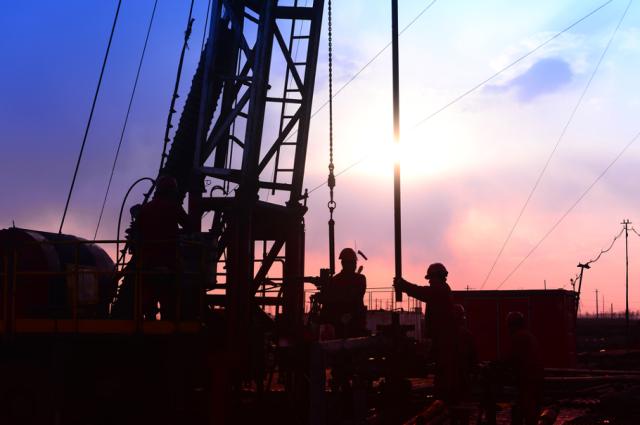
- Will domestic rig count drop in early 2018?
- Will rising demand for stimulation services continue?
- Commodity price murkiness clouds the 2018 outlook.
Take your money and place your bets: It’s planning time in oil and gas. With budget deliberations in full swing, perplexed oil service managers are contemplating the 2018 order of battle.
The quick answer for direction in 2018 activity is simple enough: It depends on commodity price, which depends on global inventories, which depends on the actions of nation states in the world’s largest hydrocarbon-producing provinces. And it depends on the individual actions of hundreds of independent oil and gas producers in the U.S.
Maybe 2018 budgeting is not so simple after all.
Sustained commodity pricing in the low $50s for West Texas Intermediate—and $3.20 or above for natural gas—would expand demand for all oil service lines in 2018. Sustained pricing below $45 would cause demand to contract for all oil services except well stimulation.
Consequently, the 2018 story provides multiple narratives depending on service line and commodity price. A surge in permits, well starts and rig releases as E&P companies mobilized programs in second-quarter 2017 overwhelmed the market, particularly for well stimulation. Evidence resides in rising prices for well stimulation ($75,000 per stage in August vs. $33,500 at bottom in 2016).
Additional evidence is found in the expanding lag for obtaining a frack spread, which grew from 60 days in second-quarter 2017 to 90 days as third-quarter 2017 got underway. Several stimulation providers reported being sold out for the remainder of 2017, and a few were scheduling work in 2018. The activity surge left stimulation crews with a substantial inventory of drilled but uncompleted wells (DUCs), sort of the 2017 iteration of an old challenge since rigs were generating new laterals faster than well stimulation providers could process.
DUCs rose by 900 wells in first-half 2017 to more than 6,000, according to the U.S. Energy Information Administration, even as completion crews and an extra 3 million hydraulic horsepower in stimulation capacity were eliminating the original DUC inventory from the 2014 downturn. Zipper fractures, a proxy for batch completions, grew to 75% of completion activity on average at mid-year and, in markets like the Permian and Bakken, topped 80% of well completions.
Those gains signaled that more wells were drilled on pads even as the number of wells per pad grew in stacked plays such as the Permian Basin. Crews were tied up at the well site for longer periods as they processed longer laterals, more stages and greater proppant loading, which is why demand for well stimulation will continue deep into firsthalf 2018 even as the industry adds capacity.
Rig count is a different story. Tight formation horizontal rig count grew 22% to 28% per quarter after bottoming in mid-2016. That reflected nearly full utilization for super-specification pad-optimal rigs as the industry focused on full-field development. Rig count expansion was partially underwritten by hedging earlier in 2017 when commodity prices were north of $50. Several E&P companies began hedging again as pricing returned to $50 in third-quarter 2017 after a midyear drop.
However, the E&P sector gave mixed signals during second-quarter earnings calls when the group in aggregate announced more than $1.5 billion in reductions for domestic spending. Several E&P companies signaled intentions to reduce rig count as gains in cycle time enabled the sector to grow production at double-digit levels with fewer rigs.
For now, expect lower rig counts and higher demand for stimulation, at least in first-half 2018.
From there, it’s safe to say, “It depends.”
Recommended Reading
US Drillers Add Oil, Gas Rigs for First Time in Eight Weeks
2025-01-31 - For January, total oil and gas rigs fell by seven, the most in a month since June, with both oil and gas rigs down by four in January.
US Drillers Cut Oil, Gas Rigs for First Time in Three Weeks
2025-03-28 - The oil and gas rig count fell by one to 592 in the week to March 28.
BP Earns Approval to Redevelop Oil Fields in Northern Iraq
2025-03-27 - The agreement with Iraq’s government is for an initial phase that includes oil and gas production of more than 3 Bboe, BP stated.
Baker Hughes: US Drillers Add Oil, Gas Rigs for Third Week in a Row
2025-02-14 - U.S. energy firms added oil and natural gas rigs for a third week in a row for the first time since December 2023.
APA's Apache Reports Another Oil Discovery on Alaska's North Slope
2025-03-17 - APA Corp. and its partners plan flow tests after the success of the Sockeye-2 exploratory well.
Comments
Add new comment
This conversation is moderated according to Hart Energy community rules. Please read the rules before joining the discussion. If you’re experiencing any technical problems, please contact our customer care team.


